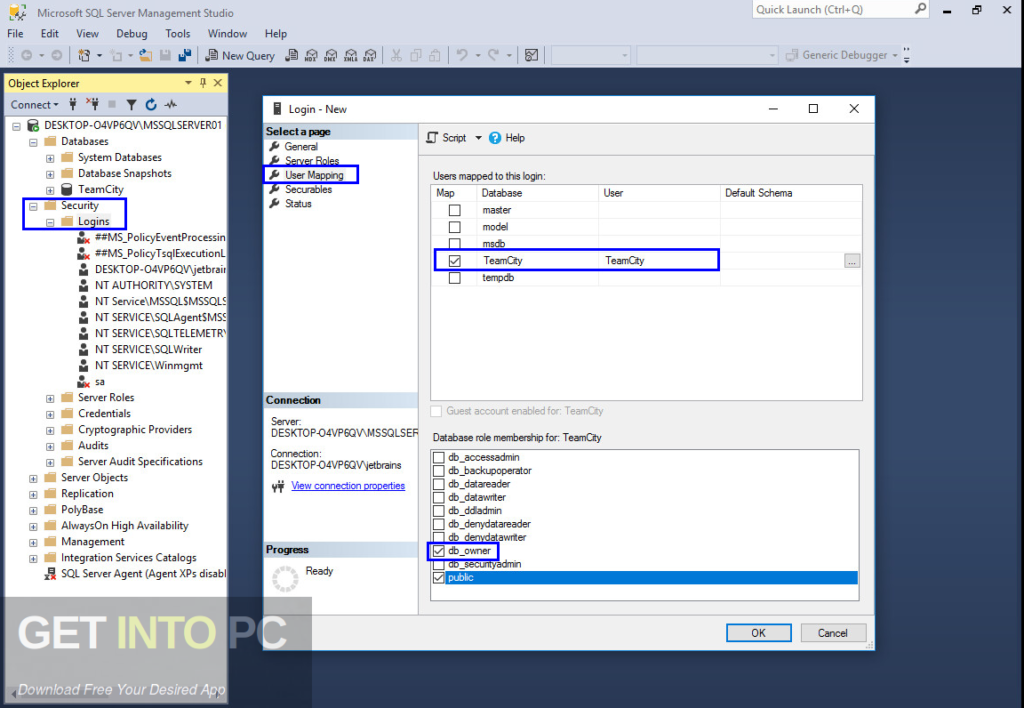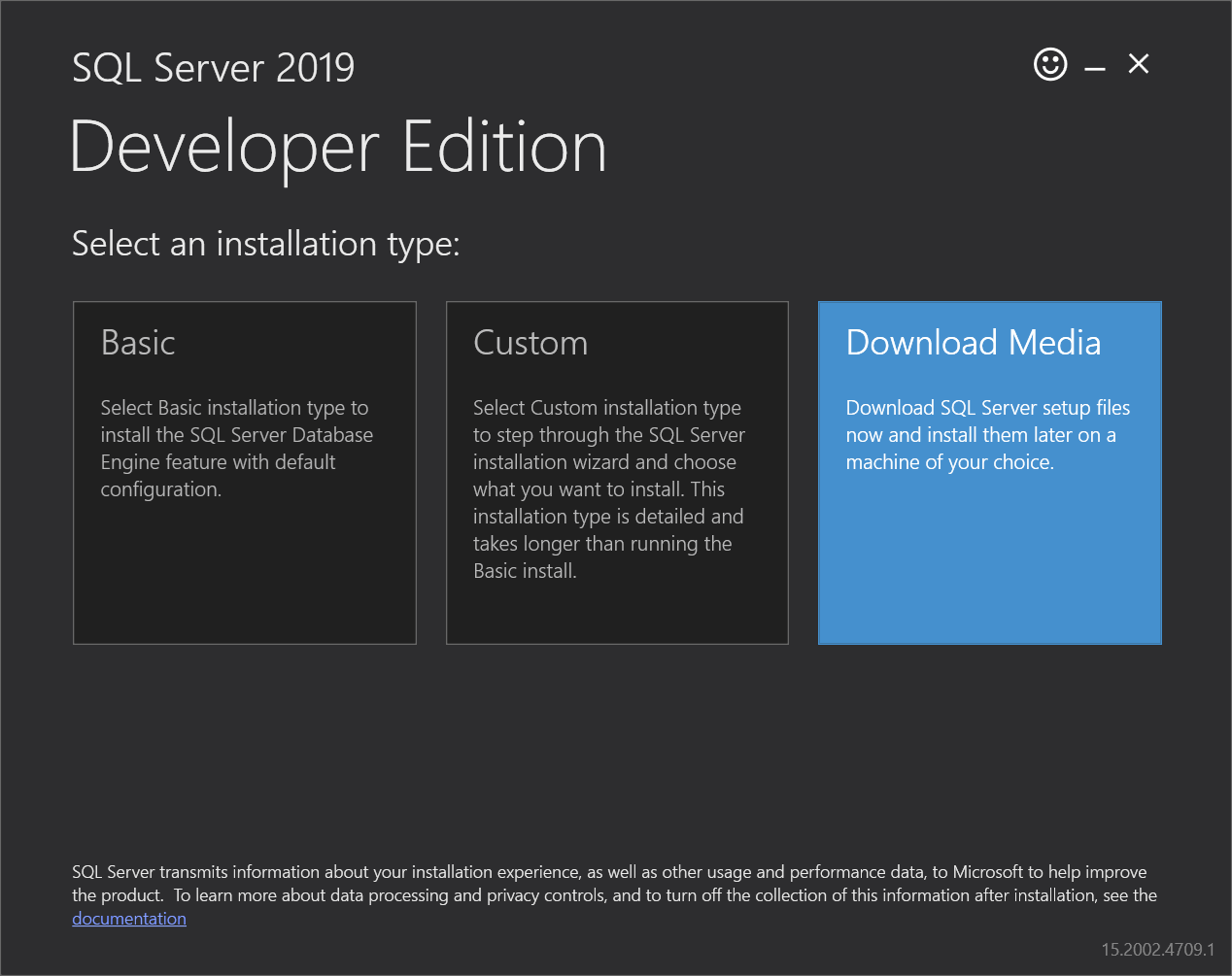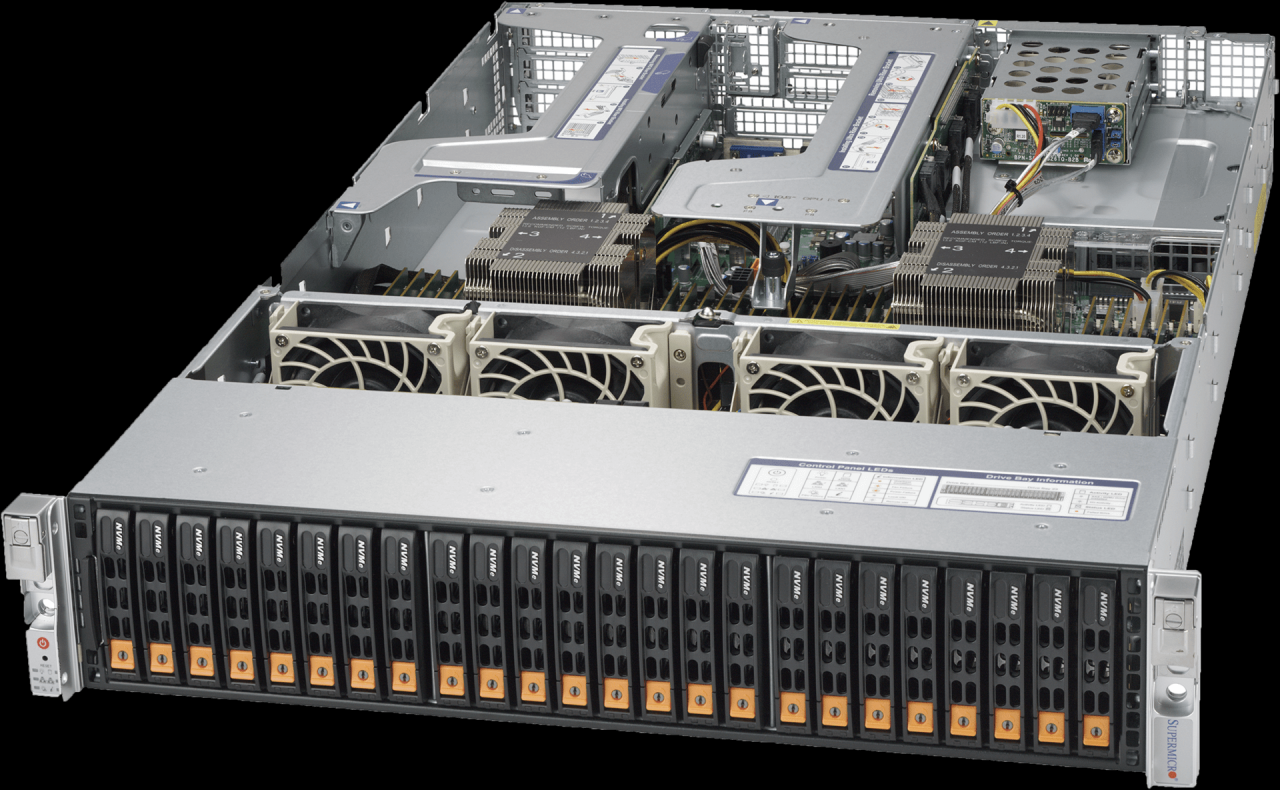SQL Server 2019 Download is your gateway to a powerful and versatile database management system. This comprehensive guide will walk you through the process of downloading, installing, and utilizing SQL Server 2019, empowering you to manage and analyze data with unparalleled efficiency.
From understanding the different editions and system requirements to exploring key features and enhancements, this guide will equip you with the knowledge and skills needed to leverage the full potential of SQL Server 2019. Whether you’re a seasoned developer or a curious newcomer, this resource will provide valuable insights and practical guidance.
Installation Process

Installing SQL Server 2019 is a straightforward process that involves several steps, including downloading the installation files, choosing the appropriate installation type, and configuring the server. This section will provide a detailed guide to the installation process, covering configuration options, best practices, and security measures.
Installation Types
The installation process for SQL Server 2019 offers three main installation types: Default, Custom, and Minimal. Each installation type has its own purpose and benefits.
- Default Installation: This is the simplest installation type, offering a quick and easy setup. It installs all the essential components, including SQL Server Database Engine, Management Tools, and Reporting Services. It’s suitable for basic installations and users who don’t require specific configurations.
- Custom Installation: This type allows for more control over the components to be installed. It gives you the flexibility to select specific features, such as SQL Server Database Engine, Analysis Services, or Integration Services, based on your needs. This is ideal for users who want to customize their installation based on specific workloads and requirements.
- Minimal Installation: This option installs only the core components, such as the SQL Server Database Engine, and leaves out other features. It’s a lightweight installation, ideal for environments with limited resources or when only the database engine is required.
The choice of installation type depends on the specific requirements of your environment.
Configuration Options
During the installation process, you’ll be presented with several configuration options that affect the behavior and functionality of SQL Server. These options include:
- Instance Name: This defines the name of the SQL Server instance. It’s recommended to use a descriptive name that reflects the purpose of the instance. For example, “SQLServerDev” for a development instance or “SQLServerProd” for a production instance.
- Collation: Collation determines how data is sorted and compared within the database. Choose a collation that matches the language and character set used in your environment. The default collation for SQL Server 2019 is “SQL_Latin1_General_CP1_CI_AS”.
- Server Authentication Mode: This option defines how users authenticate to the SQL Server instance. You can choose between Windows Authentication or SQL Server Authentication. Windows Authentication uses the operating system’s authentication mechanism, while SQL Server Authentication uses usernames and passwords configured within SQL Server. It’s recommended to use Windows Authentication for enhanced security and to avoid managing separate usernames and passwords.
- Service Accounts: Specify the service accounts used by SQL Server components, such as the SQL Server Database Engine and SQL Server Agent. It’s recommended to use dedicated service accounts for each component to enhance security and isolate permissions.
- Data Directories: Specify the location for storing database files, log files, and other data. Choose a directory with sufficient disk space and appropriate permissions. It’s recommended to use separate directories for data and log files to optimize performance and improve recovery.
- Error Logging: Configure the error logging settings, including the log file location, size, and logging level. Detailed error logs are essential for troubleshooting and monitoring server health.
- SQL Server Agent: SQL Server Agent is a powerful tool for scheduling jobs, automating tasks, and managing server maintenance. Configure the agent to meet your specific needs, such as running backups, generating reports, or executing scripts.
Security Measures
Setting up proper security measures during installation is crucial for protecting your SQL Server data. Here are some important security considerations:
- Strong Passwords: Use strong passwords for all SQL Server accounts, including the administrator account (sa). A strong password should be at least 12 characters long, include uppercase and lowercase letters, numbers, and special characters. Avoid using common words or phrases.
- Lock Down the sa Account: The sa account has the highest privileges within SQL Server. It’s essential to disable the sa account or restrict its access to specific users or applications. Consider using a dedicated administrator account with limited privileges for managing SQL Server.
- Enable Auditing: Auditing tracks database activities, such as login attempts, database access, and data modifications. Enabling auditing provides valuable insights into potential security threats and helps in investigating security incidents.
- Use Firewall Rules: Configure firewall rules to restrict access to the SQL Server instance from unauthorized networks or computers. This helps prevent unauthorized connections and attacks.
- Regularly Patch and Update: Keep SQL Server up to date with the latest security patches and updates. Regularly patching and updating the server helps mitigate vulnerabilities and protect against known security threats.
Database Management and Administration: Sql Server 2019 Download
Database management and administration in SQL Server 2019 encompass a wide range of tasks that ensure the smooth operation, security, and performance of your databases. These tasks involve creating, managing, and backing up databases, as well as monitoring and troubleshooting issues.
Creating Databases
Creating a database in SQL Server 2019 is the first step in organizing and storing your data. You can create databases using SQL Server Management Studio (SSMS), Transact-SQL (T-SQL) scripts, or the SQL Server Configuration Manager.
- Using SSMS: SSMS provides a user-friendly interface for creating databases. You can right-click on the Databases node in the Object Explorer and select “New Database.” In the New Database dialog box, you can specify the database name, location, size, and other settings.
- Using T-SQL: You can create databases using T-SQL scripts, which provide more flexibility and control. The following T-SQL script creates a database named “MyDatabase”:
CREATE DATABASE MyDatabase
- Using SQL Server Configuration Manager: You can also create databases using the SQL Server Configuration Manager, which provides a centralized location for managing various SQL Server settings. However, this method is less common than using SSMS or T-SQL.
Managing Databases
Once a database is created, you need to manage its various aspects, including user access, permissions, and data integrity. This involves tasks such as creating and managing users, assigning permissions, and performing regular backups.
- User Management: Managing users involves creating, modifying, and deleting user accounts. Each user account can have different permissions and access levels to specific databases or objects within a database. You can manage users using SSMS or T-SQL scripts.
- Permissions Management: Permissions define the actions users can perform on database objects. You can assign different levels of permissions to users, such as read-only access, write access, or full control. Permissions can be managed using SSMS or T-SQL scripts.
- Data Integrity: Maintaining data integrity is crucial for ensuring the accuracy and reliability of your data. This involves implementing constraints, triggers, and other mechanisms to enforce data rules and prevent data corruption. You can manage data integrity using SSMS or T-SQL scripts.
Backing Up Databases
Regularly backing up your databases is essential for disaster recovery and data protection. SQL Server 2019 provides various backup options, including full backups, differential backups, and transaction log backups.
- Full Backups: Full backups create a complete copy of your database at a specific point in time. This is the most comprehensive backup type but can take longer to complete.
- Differential Backups: Differential backups capture only the changes made to your database since the last full backup. This is faster than a full backup but requires a full backup to restore.
- Transaction Log Backups: Transaction log backups capture the transactions that have occurred since the last backup. This is the fastest backup type but requires a full or differential backup to restore.
Using SQL Server Management Studio (SSMS)
SQL Server Management Studio (SSMS) is a powerful tool for managing and administering SQL Server databases. It provides a graphical interface for performing various database management tasks, including creating databases, managing users and permissions, backing up and restoring databases, and monitoring database performance.
- Database Creation: SSMS offers a user-friendly interface for creating databases, allowing you to specify the database name, location, size, and other settings.
- User and Permission Management: SSMS simplifies user and permission management by providing a graphical view of users, roles, and permissions. You can easily create, modify, and delete users and assign permissions to them.
- Backup and Restore: SSMS provides a streamlined process for backing up and restoring databases. You can create different types of backups, schedule backups, and easily restore databases from backups.
- Performance Monitoring: SSMS offers various tools for monitoring database performance, including query performance, disk usage, and CPU utilization. You can identify performance bottlenecks and optimize database performance.
Integration with Other Technologies
SQL Server 2019 seamlessly integrates with various Microsoft technologies, creating a robust ecosystem for data management, analysis, and application development. This integration enhances efficiency, scalability, and flexibility, allowing businesses to leverage a unified platform for their data-driven initiatives.
Integration with Azure
Azure, Microsoft’s cloud platform, offers a comprehensive suite of services that complement SQL Server 2019. This integration enables businesses to leverage the power of the cloud for data storage, management, and analysis.
- Azure SQL Database: A fully managed cloud-based database service that offers high availability, scalability, and security. It provides a platform for migrating on-premises SQL Server databases to the cloud, enabling seamless integration with other Azure services.
- Azure Synapse Analytics: A unified data platform that combines data warehousing, data lakes, and big data analytics capabilities. It allows businesses to ingest, transform, and analyze large datasets, leveraging SQL Server 2019 for data processing and management.
- Azure Data Factory: A cloud-based data integration service that facilitates the movement and transformation of data between various sources and destinations. It enables businesses to build data pipelines that connect SQL Server 2019 databases with other data sources, such as Azure Blob Storage and Azure Data Lake Storage.
Integration with Power BI
Power BI, Microsoft’s business intelligence and data visualization tool, provides a powerful platform for creating interactive reports and dashboards.
- DirectQuery: Power BI can connect directly to SQL Server 2019 databases, enabling users to create real-time reports and dashboards based on live data. This eliminates the need for data extraction and loading, providing instant insights.
- Data Modeling: Power BI can leverage SQL Server 2019’s data modeling capabilities to create star schemas and dimensional models, enhancing data analysis and reporting. This allows businesses to gain deeper insights from their data by defining relationships and hierarchies between different data tables.
Integration with .NET
.NET, Microsoft’s software development framework, provides a comprehensive set of tools and libraries for building applications.
- ADO.NET: A framework for accessing and managing data from various sources, including SQL Server 2019. It allows developers to create robust applications that interact with databases, perform data operations, and manage transactions.
- Entity Framework: An object-relational mapper (ORM) that simplifies database interactions by allowing developers to work with data as objects. It enables seamless integration with SQL Server 2019, streamlining application development and reducing code complexity.
Use of SQL Server 2019 in Data Warehousing, Sql server 2019 download
SQL Server 2019 plays a crucial role in data warehousing by providing a robust platform for storing, managing, and analyzing large volumes of data.
- Data Integration: SQL Server 2019’s data integration features, such as SSIS (SQL Server Integration Services), facilitate the extraction, transformation, and loading (ETL) of data from various sources into data warehouses.
- Data Modeling: SQL Server 2019’s data modeling capabilities, including star schemas and dimensional models, enable the creation of efficient and scalable data warehouses that support complex analytical queries.
- Data Analysis: SQL Server 2019 provides powerful analytical functions and tools, such as T-SQL (Transact-SQL) and SQL Server Analysis Services (SSAS), that enable businesses to perform complex data analysis and generate insights from their data warehouses.
Use of SQL Server 2019 in Business Intelligence
SQL Server 2019 is a cornerstone of business intelligence solutions, enabling businesses to gain insights from their data and make informed decisions.
- Data Visualization: SQL Server 2019 integrates with Power BI and other business intelligence tools, allowing businesses to create interactive reports and dashboards that visualize key business metrics and trends.
- Data Analysis: SQL Server 2019’s analytical capabilities, such as SSAS and T-SQL, empower businesses to perform complex data analysis and extract valuable insights from their data.
- Reporting and Dashboards: SQL Server 2019 provides tools for creating comprehensive reports and dashboards that summarize key business metrics and trends, facilitating data-driven decision-making.
Use of SQL Server 2019 in Application Development
SQL Server 2019 serves as a robust data platform for application development, providing reliable and scalable data storage and management capabilities.
- Data Access: SQL Server 2019 offers a wide range of data access options, including ADO.NET and Entity Framework, enabling developers to easily connect and interact with databases from their applications.
- Data Security: SQL Server 2019 provides comprehensive security features, such as role-based access control (RBAC) and data encryption, ensuring the protection of sensitive data in applications.
- Transaction Management: SQL Server 2019’s transaction management capabilities ensure data consistency and integrity in applications, preventing data loss and ensuring reliable data operations.
Future of SQL Server
SQL Server, a robust and widely adopted database management system, continues to evolve and adapt to the ever-changing landscape of data management. Microsoft has a clear roadmap for SQL Server’s future, focused on enhancing its capabilities and ensuring its relevance in the face of emerging technologies.
Impact of Emerging Technologies
The rise of cloud computing and artificial intelligence (AI) has significantly impacted the data management landscape, and SQL Server is actively embracing these technologies.
- Cloud Integration: Microsoft Azure is the primary cloud platform for SQL Server, offering various deployment options, including managed instances, virtual machines, and serverless compute. This allows for scalability, flexibility, and cost-effectiveness in managing data.
- AI Integration: SQL Server integrates with Azure Cognitive Services, providing capabilities for machine learning, natural language processing, and predictive analytics. This enables organizations to leverage AI for data insights, automation, and decision-making.
Roadmap for Future Enhancements
Microsoft is committed to enhancing SQL Server’s capabilities through regular updates and new releases. The roadmap includes:
- Performance Optimization: Ongoing efforts focus on improving query performance, resource utilization, and overall system efficiency. This includes advancements in query processing, indexing, and data compression.
- Security Enhancements: Security is a top priority, with continuous improvements to threat detection, prevention, and compliance features. This includes advanced threat intelligence, data masking, and encryption capabilities.
- Data Analytics and Insights: SQL Server is evolving to become a powerful platform for data analytics and business intelligence. This includes enhanced support for data visualization, predictive modeling, and real-time data analysis.
- Integration with Modern Technologies: SQL Server is being integrated with modern technologies such as containers, microservices, and serverless computing to enable seamless deployment and integration within modern application architectures.
Long-Term Relevance and Adoption
Despite the emergence of new technologies, SQL Server remains a highly relevant and widely adopted database management system. Its proven reliability, security, and performance, coupled with Microsoft’s ongoing investments, ensure its continued relevance in the evolving data landscape.
- Enterprise-Grade Reliability: SQL Server is known for its high availability, disaster recovery, and data integrity features, making it a trusted choice for mission-critical applications.
- Extensive Ecosystem: SQL Server benefits from a vast ecosystem of tools, applications, and resources, providing comprehensive support for development, administration, and data management.
- Strong Community Support: SQL Server has a large and active community of developers, administrators, and users, providing a wealth of knowledge, support, and resources.
Last Recap
As you embark on your SQL Server 2019 journey, remember that this is just the beginning. Explore the vast resources available, experiment with new features, and embrace the continuous learning process. SQL Server 2019 offers a powerful platform for managing data, and with the right knowledge and dedication, you can unlock its full potential and achieve your data-driven goals.
Getting your hands on SQL Server 2019 is a breeze, with the download readily available online. But before you dive into the world of database management, maybe you’d like to take a break and explore the creative side of things by making your own homemade lip gloss.
Once you’re back, you’ll be ready to tackle the complexities of SQL Server 2019 and unleash its powerful features.




